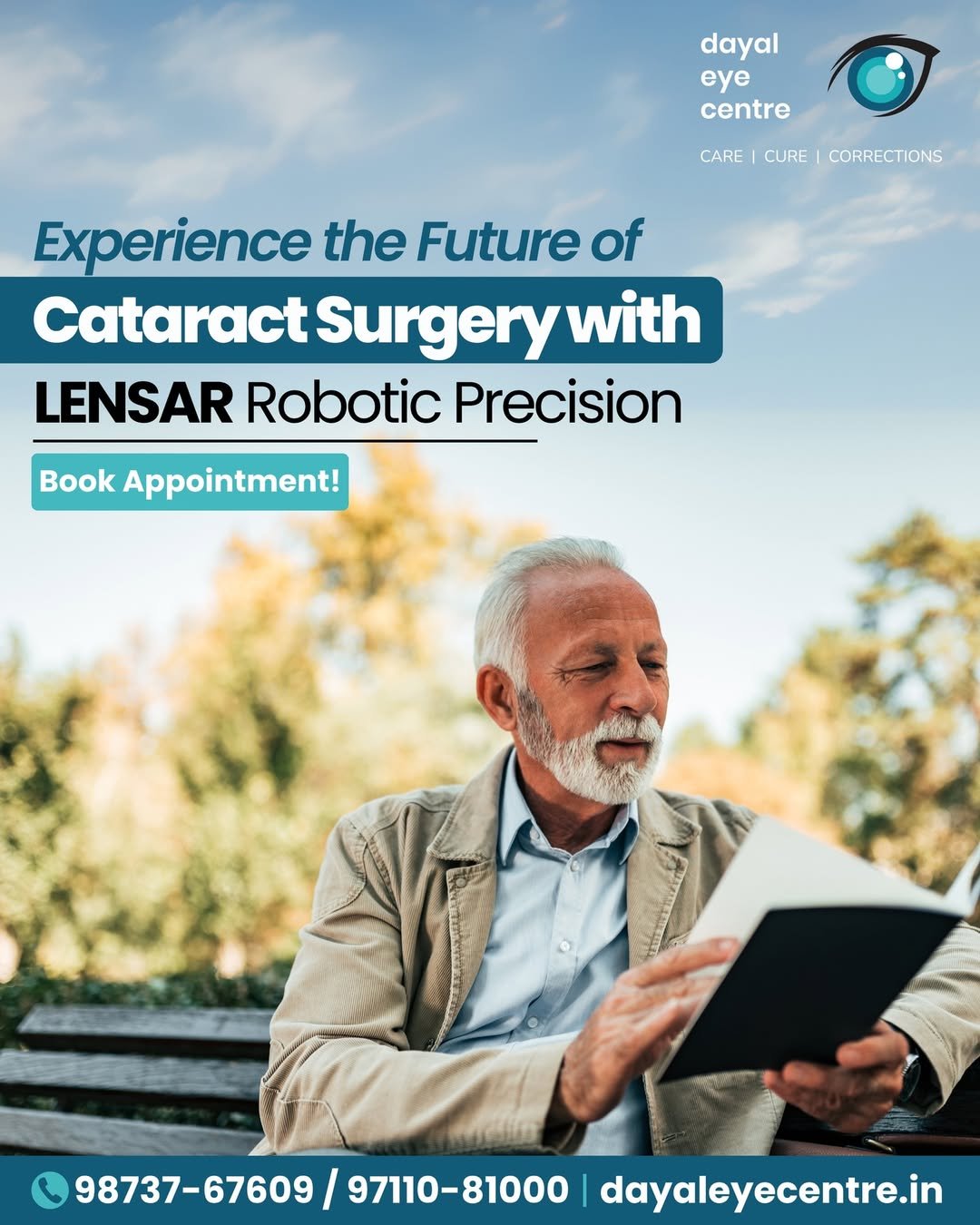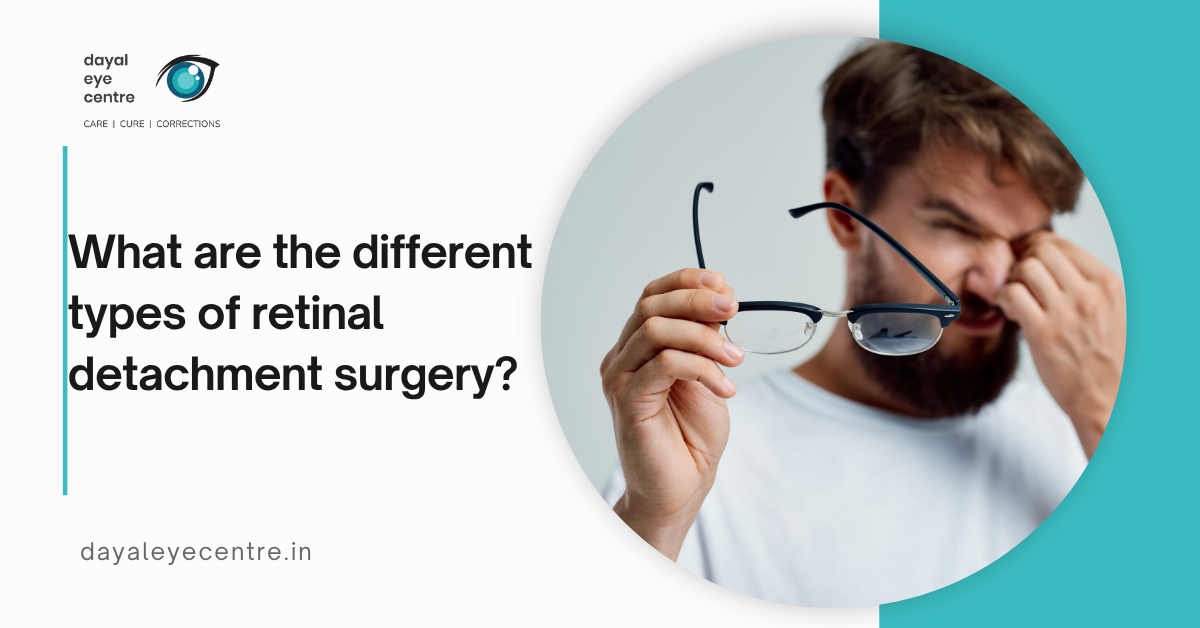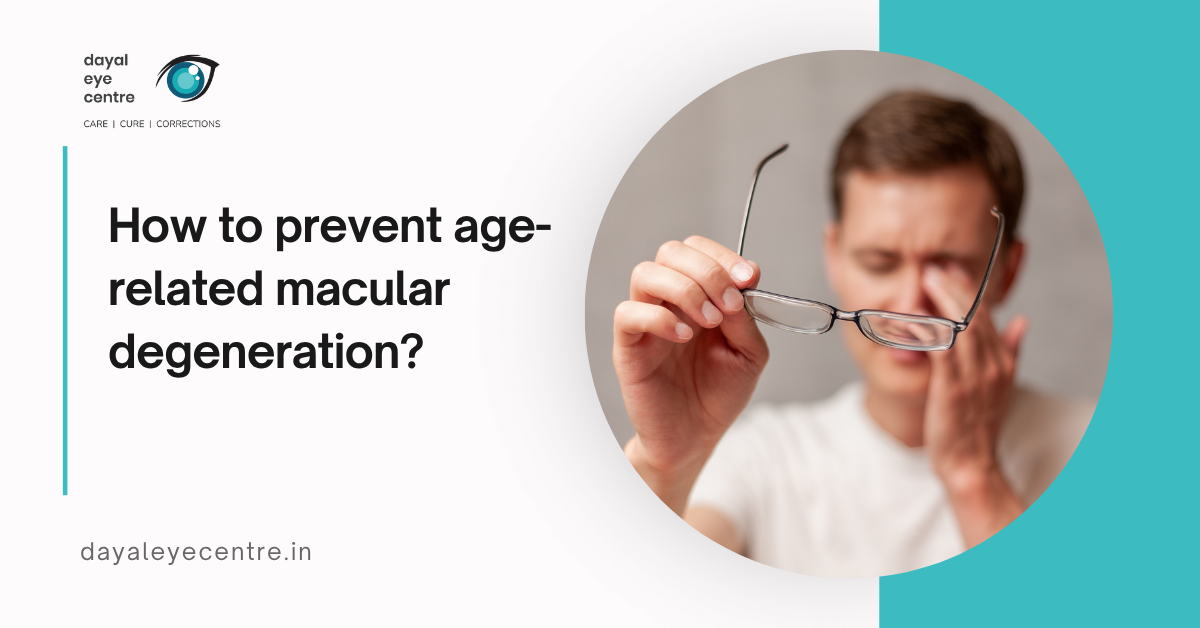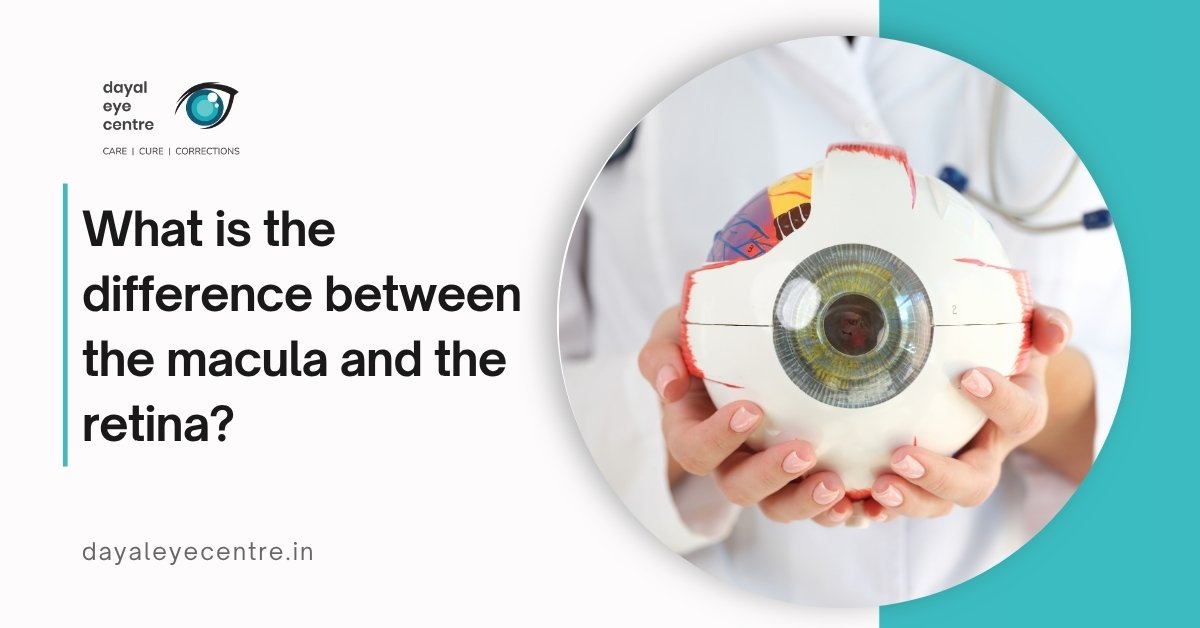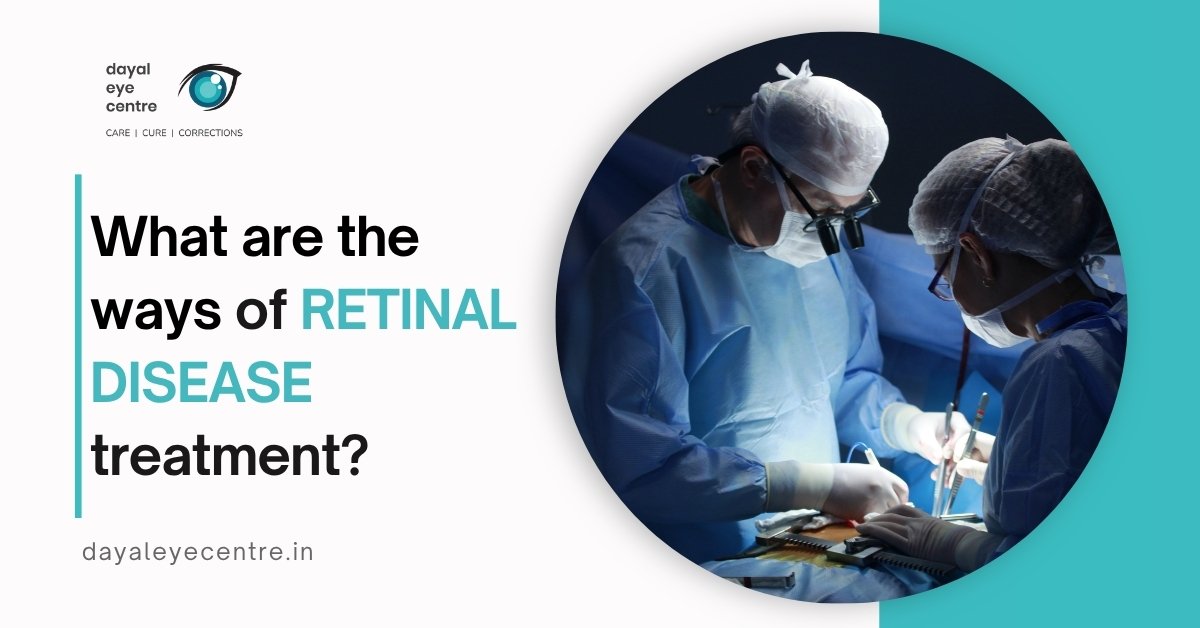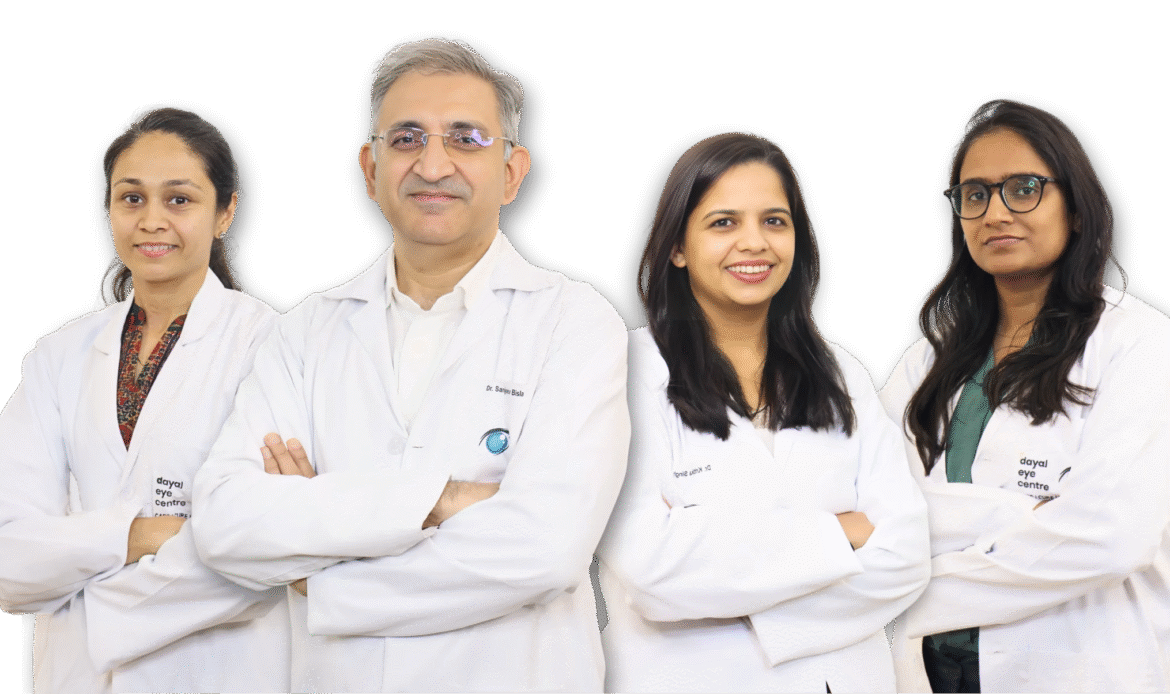There are two main types: Dry AMD, which accounts for 80% of cases, and Wet AMD, which requires more aggressive treatment. Common symptoms include blurry vision, distorted lines, and difficulty recognizing familiar faces. Risk factors include being over 50, smoking, and high blood pressure. Early diagnosis and treatments like supplements and injections can help manage the condition effectively.
How AMD Affects Your Vision Over Time
Age-related macular degeneration changes your vision over time. The changes start so subtly that you might not notice them for years. Early symptom recognition helps you seek treatment at the right time.
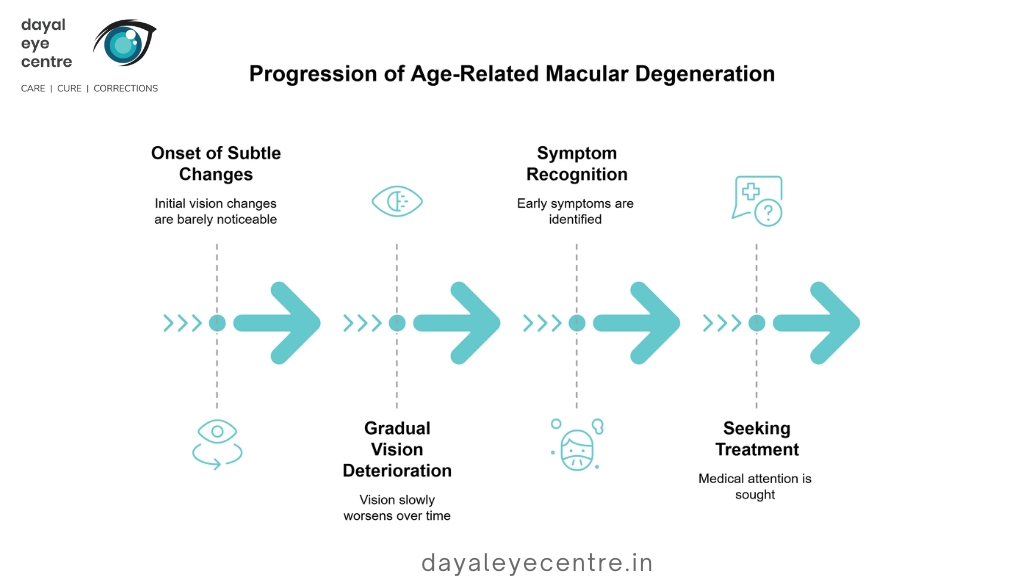
Macular degeneration vision loss explained
AMD targets your retina’s macula – the central part that handles sharp, detailed vision. Your vision loss pattern with AMD is different from other eye conditions. The original signs might show up as wavy straight lines or colors that don’t look as bright.
Your central vision becomes blurry as the disease moves forward. Blank spots appear and make everyday tasks harder to do. Picture looking at a clock face – you might see the numbers around the edge clearly but the hands in the middle appear fuzzy.
Peripheral vs central vision in AMD
AMD has a unique feature – it only affects your central vision. This part helps you recognize faces, read text, and handle detailed work. Your peripheral vision stays intact throughout the disease’s course.
People with AMD rarely go completely blind because their side vision remains unaffected. Notwithstanding that, central vision loss disrupts daily activities by a lot. Driving becomes difficult, reading turns challenging, and faces become hard to recognize. Precise visual tasks get harder as the disease advances.
Progression from early to advanced stages
AMD moves through specific stages, though not everyone goes through each one:
Early stage shows minimal symptoms, but eye doctors can spot small yellow deposits called drusen. Vision stays normal for most people during this time.
Intermediate stage brings subtle vision changes. You might struggle to see in low light or tell similar colors apart.
Late (advanced) stage brings major vision loss. The experience varies based on whether you have dry or wet AMD. Dry AMD takes years to progress, but wet AMD can cause quick vision loss within weeks or months.
Disease progression speed varies among people. If you have large drusen in both eyes, about 26% develop late-stage AMD within five years. The risk increases for your second eye when one eye already has advanced AMD – 15.2 cases per 100 person-years for wet AMD and 11.2 cases per 100 person-years for dry AMD.
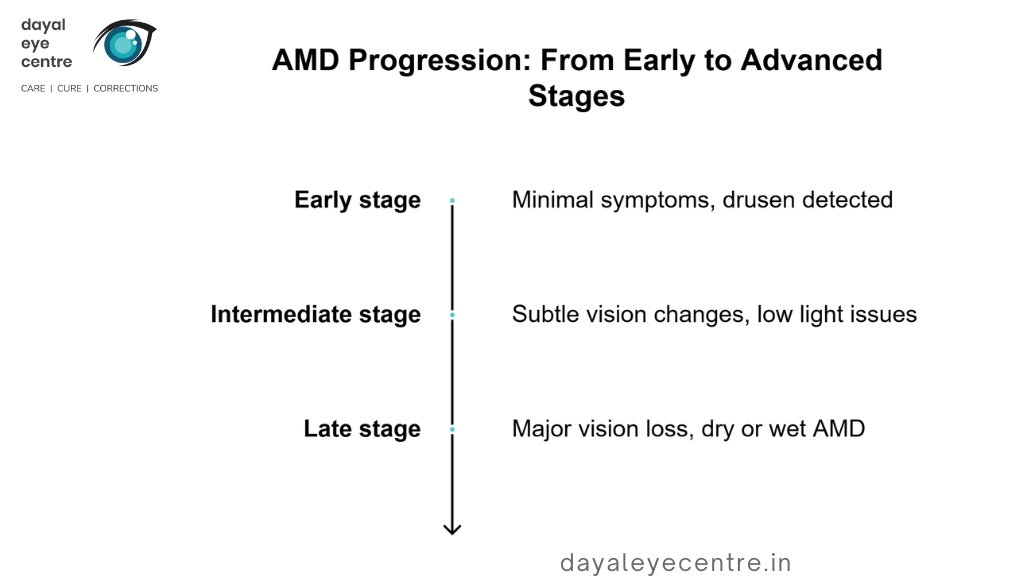
Identifying Early Signs and Symptoms of AMD
Early warning signs of age-related macular degeneration are crucial to spot so doctors can step in quickly. Your eyes might show subtle changes before you notice any vision loss.
Visual distortions and blind spots
AMD’s telltale sign is metamorphopsia – a visual distortion that makes straight lines look wavy, bent, or curved. This is a big deal as it means that the condition has reached an advanced stage, and you need to see a doctor right away. People often notice clear blurry spots or blind spots in their central vision. These spots can show up as dark, blurry areas or “whiteouts” in the center of your sight and grow larger as time passes.
Changes in reading and face recognition
Daily tasks often reveal the first signs of macular degeneration. Reading becomes harder because words look blurry even with the right glasses. You might need much brighter light to read or do detailed work. On top of that, people find it hard to recognize faces – a symptom that really affects their social life. Studies show that even mild vision loss makes it tough to recognize faces, which leads to feeling embarrassed and avoiding social situations. People try to use other clues like hairstyle or the way someone walks, but this rarely works and makes them more dependent on others.
When to see an eye doctor
You just need to see a doctor right away if:
- Straight lines start looking wavy or distorted
- Your central vision gets blurry or shows blank spots
- You can’t see fine details anymore
- Reading text or recognizing faces becomes harder
- Your vision gets worse in low light
Early AMD often has no obvious symptoms, so regular eye checkups are vital, especially after age 60. AMD can affect one or both eyes – and changes might go unnoticed if only one eye is affected because your good eye makes up for it. Note that catching AMD early gives you the best chance for successful treatment.
Getting Diagnosed: What to Expect During an Eye Exam
Proper diagnosis is the life-blood of macular degeneration treatment that works. Your doctor needs a complete eye examination to evaluate any symptoms you notice.
Dilated eye exam and retinal imaging
Your doctor can inspect the back of your eye with a dilated eye exam. Eye drops widen your pupils to give a clear view of the retina. Your eye care professional looks for yellowish deposits called drusen beneath the retina – these deposits signal age-related macular degeneration. Detailed retinal images captured through fundus photography help track changes over time. These photos create a baseline to monitor how macular degeneration affects your vision.
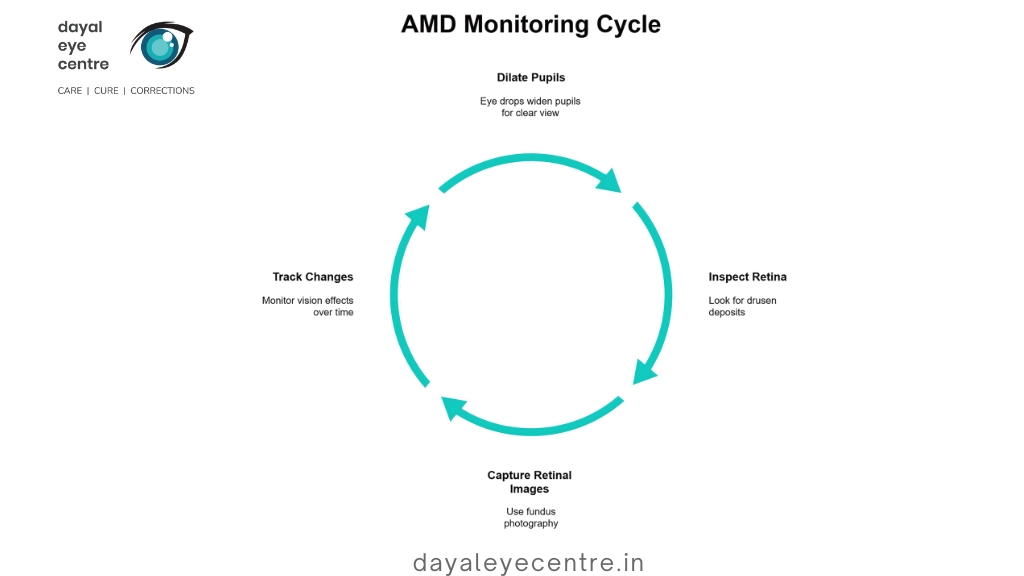
OCT and fluorescein angiography
Optical Coherence Tomography (OCT) stands out as a most important advancement in diagnostic technology. This non-invasive imaging method shows detailed cross-sectional images of your retina. OCT reveals areas where the retina has thinned, thickened, or swelled from fluid buildup—vital information that determines the right treatment approach. Doctors may perform fluorescein angiography for patients who might have wet AMD. This procedure traces a special dye injected into your arm through the retina’s blood vessels. Fluorescent patches can show leaking blood vessels typical of this condition. Sometimes, doctors add indocyanine green angiography to identify specific types of macular degeneration.
Using the Amsler grid at home
The Amsler grid offers a simple yet valuable way to check vision changes between doctor visits. This square grid with a central dot helps you spot visual distortions early. Here’s how to use it:
- Hold the grid approximately 12-14 inches from your eyes (reading distance)
- Cover one eye and focus on the center dot
- Note any wavy, dim, or missing lines
- Repeat with your other eye
- Test weekly and contact your doctor immediately if you notice changes
Weekly grid checks can catch early signs when AMD changes from dry to wet form. This makes the grid an essential part of your ongoing care.
Managing AMD: From Supplements to Injections
Scientists haven’t found a cure for age-related macular degeneration yet. However, several treatments can slow down its progression and help you keep your vision. Your treatment options depend on whether you have dry or wet AMD and what stage the disease has reached.
AREDS2 formula and dietary support
The Age-Related Eye Disease Study 2 (AREDS2) discovered a specific vitamin and mineral formula that reduces progression to advanced AMD by about 25% over five years. This formula works best if you have:
- Intermediate AMD in one or both eyes
- Late AMD in one eye only (to protect the unaffected eye)
The AREDS2 formula contains:
- 500 mg vitamin C
- 400 IU vitamin E
- 80 mg zinc (or 25 mg in reduced formulation)
- 2 mg copper
- 10 mg lutein
- 2 mg zeaxanthin
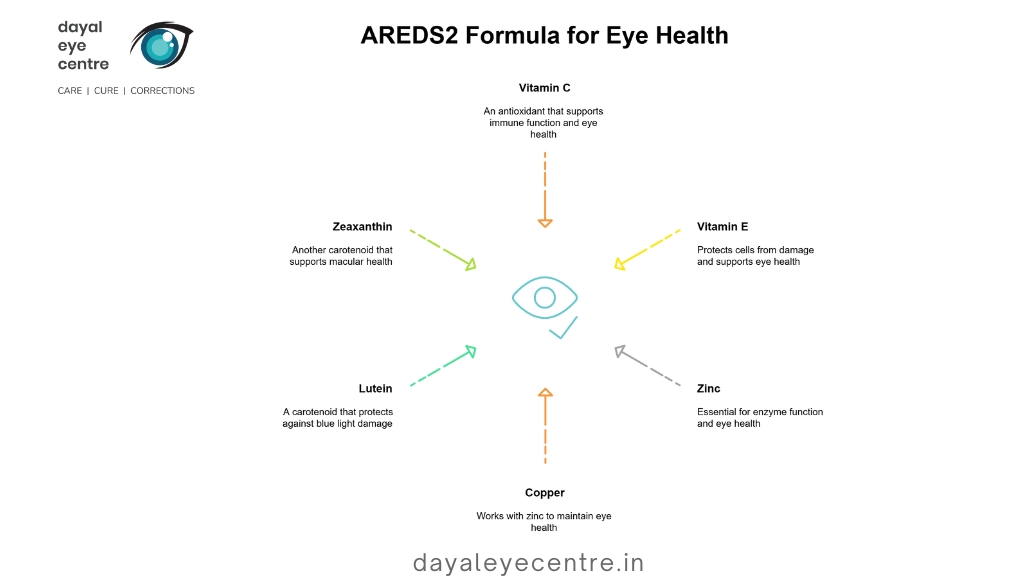
People with low dietary intake of lutein and zeaxanthin saw a 26% lower risk of developing advanced AMD when they took supplements. The Mediterranean diet also showed promising results with a 25% reduction in progression risk.
Anti-VEGF therapy for wet AMD
Anti-VEGF medications are a great way to get control of wet AMD. These drugs slow down or stop abnormal blood vessel growth and leakage. Doctors numb your eye before administering these medications through injections.
Current anti-VEGF treatments include Avastin, Lucentis, Eylea, Beovu, Vabysmo, and Susvimo. Most patients need injections every 4-12 weeks. Newer options like Vabysmo can last up to four months between treatments. Research shows these treatments help 90% of patients keep their vision and improve sight in about one-third of cases.
Vision rehabilitation and assistive tools
Vision rehabilitation helps you tap into the full potential of your remaining sight through specialized training and devices. You can benefit from:
- Non-optical devices: Large-print materials, audio books, tactile labels
- Electronic aids: Video magnifiers, OCR devices, smartphones with accessibility features
- Specialized eyewear: Telescopic lenses, magnification, contrast enhancement
Rehabilitation specialists can teach you adaptive techniques to stay independent despite vision changes. These experts will help find solutions that work best for your specific visual challenges.
Emerging treatments and clinical trials
Research is moving forward in several exciting directions:
- Gene therapy: Treatments like RGX-314 and ADVM-022 might deliver long-lasting anti-VEGF effects with just one treatment
- Stem cell therapy: Clinical trials are testing RPE cell replacement for dry AMD
- Complement inhibitors: New drugs target inflammatory pathways for geographic atrophy
- Port delivery systems: Implantable devices release medication slowly and need refills only every 6 months
Scientists continue to develop new treatment options through multiple clinical trials. These advances bring hope for better management of both dry and wet forms of AMD.
Conclusion
Our learning about age-related macular degeneration shows how this condition affects millions of people worldwide. AMD poses a tough challenge for aging adults. It affects central vision but usually leaves peripheral sight intact. So patients keep some visual function as the disease progresses, though they find it harder to read and recognize faces.
Getting AMD detected early makes a big difference in treatment success. Adults over 50 or those with risk factors like smoking or high blood pressure need regular eye checkups. These checkups are the first line of defense. The Amsler grid helps people track vision changes between doctor visits.
Several treatments can slow down AMD and help preserve vision after diagnosis. The AREDS2 formula helps intermediate and late-stage patients a lot, reducing progression by approximately 25% over five years. Anti-VEGF injections work well for wet AMD patients. These injections help 90% of patients keep their vision stable. Vision rehabilitation teaches practical ways to use remaining sight through special training and helpful technologies.
Research keeps bringing new hope. Gene therapy, stem cell treatments, and new delivery systems could lead to better treatment options. AMD doesn’t have a cure yet, but these advances point to better outcomes for patients.
This detailed guide should help you understand AMD better, whether you have it or support someone who does. Note that knowing about AMD and acting quickly are your best tools to protect your vision and life quality when dealing with this condition.
FAQs
What are the main types of age-related macular degeneration (AMD)?
There are two primary types of AMD: dry AMD, which accounts for about 80% of cases, and wet AMD. Dry AMD progresses slowly over years, while wet AMD can cause rapid vision deterioration within weeks or months.
How does AMD affect vision over time
AMD primarily affects central vision, causing blurriness, difficulty recognizing faces, and making straight lines appear wavy. Peripheral vision usually remains intact. As the disease progresses, central vision may develop blank spots, making daily activities challenging.
What are the early signs of AMD that I should watch for?
Early signs include difficulty reading or recognizing faces, needing brighter light for close-up work, and seeing straight lines as wavy or distorted. You may also notice blurry or dark spots in your central vision.
How is AMD diagnosed?
AMD is typically diagnosed through a comprehensive eye exam, including a dilated eye exam, retinal imaging, and tests like Optical Coherence Tomography (OCT) and fluorescein angiography. The Amsler grid is also a useful tool for monitoring vision changes at home.
What treatments are available for AMD?
Treatment options depend on the type and stage of AMD. For dry AMD, the AREDS2 vitamin formula may slow progression. Wet AMD is often treated with anti-VEGF injections. Vision rehabilitation and assistive devices can help manage vision loss. Emerging treatments like gene therapy and stem cell therapy are also being researched.
Author

Dr. Sanjeev Bisla is an expert eye specialist in Gurgaon. With more than two decades of experience, he is the director and chief ophthalmologist of Dayal Eye Centre.
View all posts


